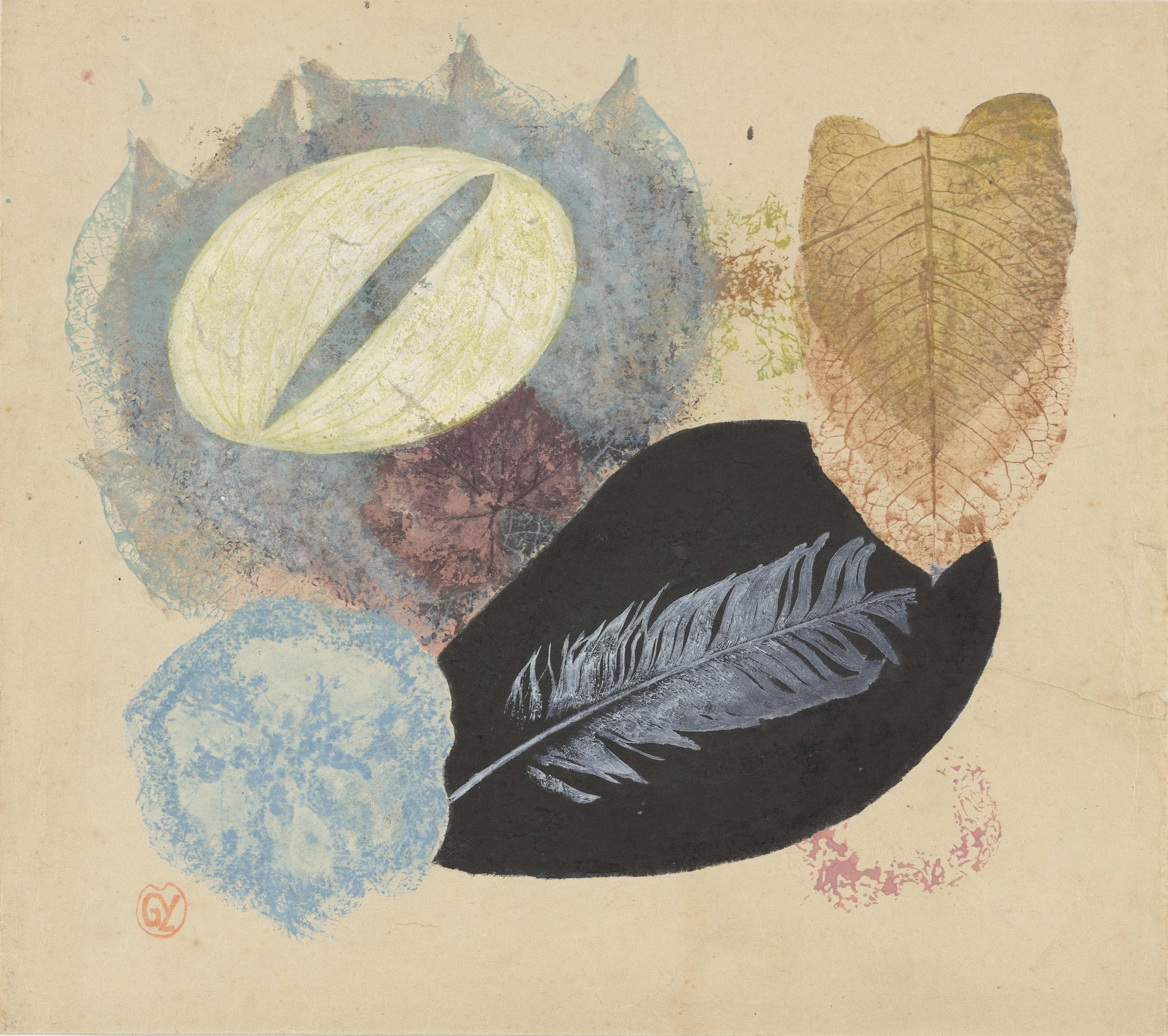
Yamaguchi’s early abstract work may have been inspired by photograms made by his close friend Onchi Kōshirō. A photogram is a photographic image made without a camera. Objects are placed directly on a light-sensitive material, which is then exposed to light. The result is a negative shadow image of the object, very similar in appearance to how this white feather appears against the black area. Photograms were popular among modern artists like Man Ray and László Moholy-Nagy, with whom Onchi and Yamaguchi were familiar.
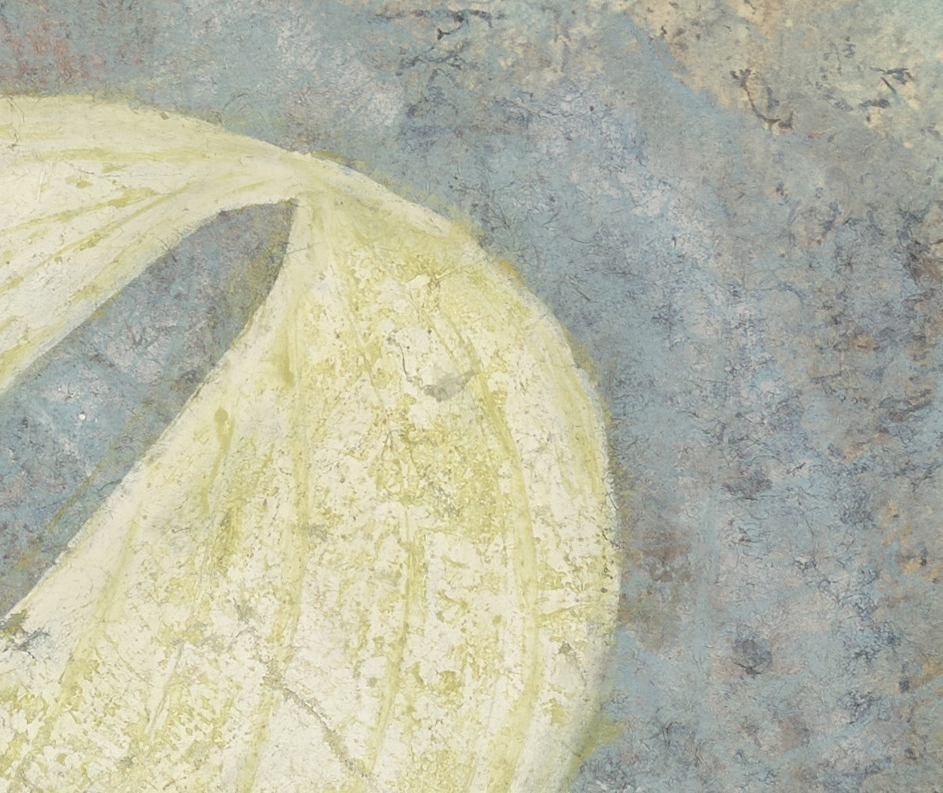
Yamaguchi began his career making figurative prints (S2019.3.1925) but turned toward abstraction in the postwar era, when modernist styles such as abstraction, surrealism, cubism, and Dadaism became more tolerated in Japan. He explained,
Art activity during the war was an extremely restricted environment, and it was such a suffocating situation that is safe to say that abstract works, surrealism, etc., had absolutely no chance of publication.
(translated by Lillian Wies)
Yamaguchi continued to make abstract works throughout his career, including Coincidental Meeting (S2019.3.1919) and the abstracted human figure in Noh Actor (S2019.3.1932).
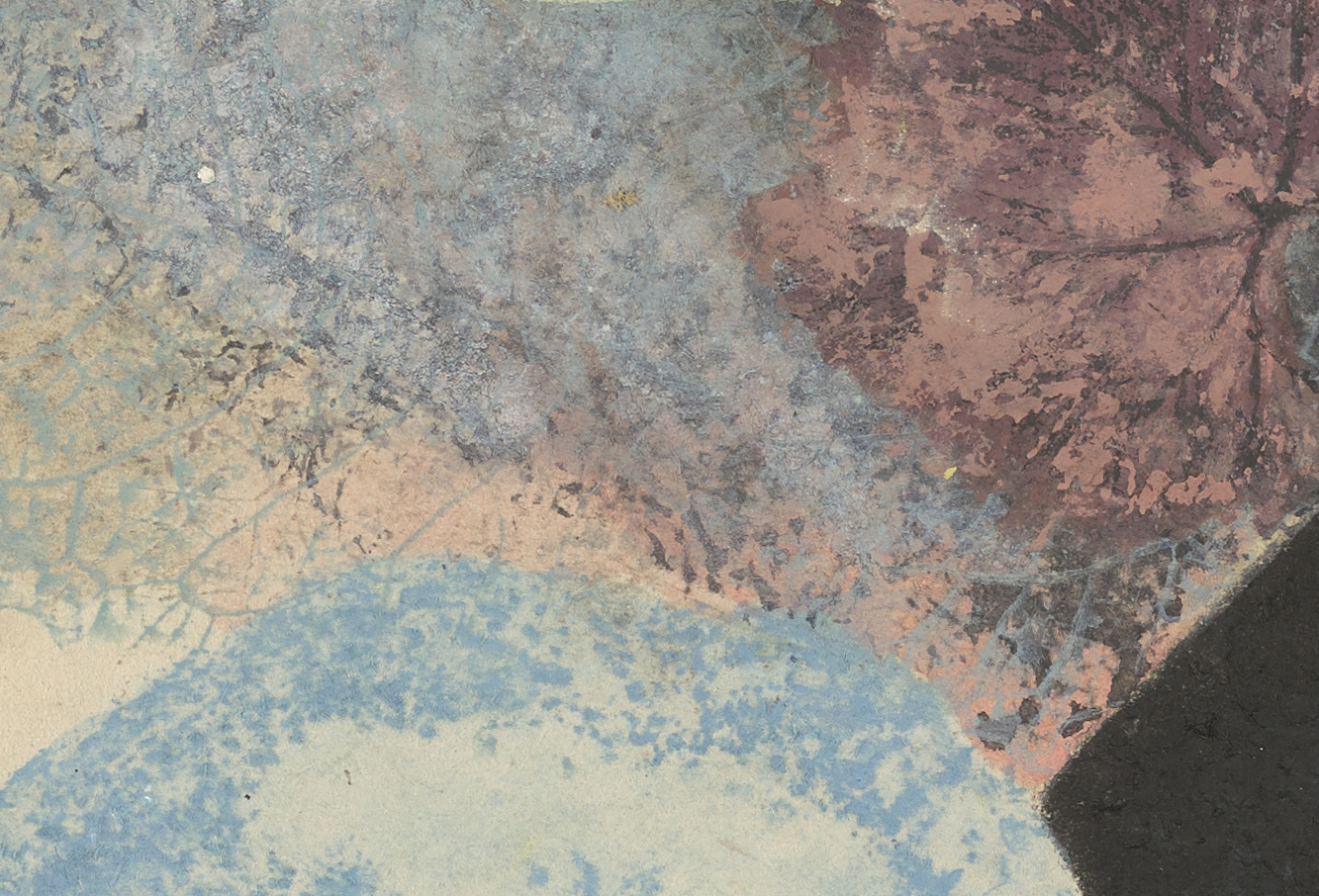
Yamaguchi believed the point of creation came during the printing process. Although he sometimes worked from sketches, he preferred to compose prints intuitively, experimenting with the placement of objects and the colors used. In this section of the print, Yamaguchi appears to have layered several impressions of different leaves, creating a dense and textured area upon which he has printed an onion-like spherical form. As viewers, we can wonder if this was his intention from the start or if he composed the print as he went along.
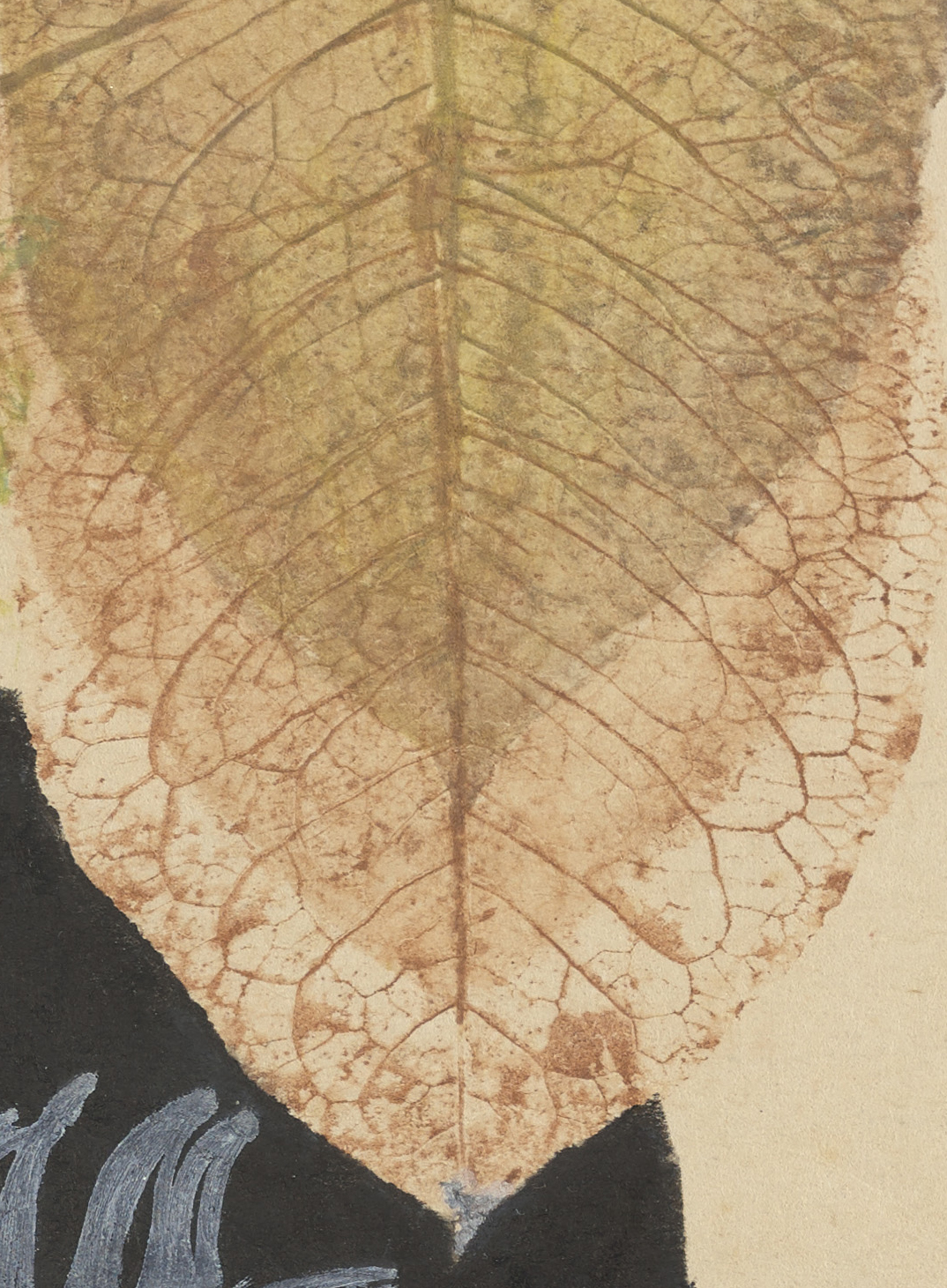
This print is an example of what Yamaguchi called an “object print” (buttai hanga). In a handwritten notebook entry dated October 22, 1948, he defined the work he printed from real objects, such as leaves, feathers, and string, as “painting compositions based on impressions of objects” (buttai no inshō ni yoru hanga no kōsei). Yamaguchi’s use of the word “painting” speaks to his belief that printmaking, which had been disparaged as an art form, was a creative process equivalent to painting. Much like painting, Yamaguchi composed his prints impulsively, and his use of organic materials led to greater variety among individual impressions. In philosophy and practice, Yamaguchi’s work during this period was similar to prints by Onchi Kōshirō (S20193.1358).
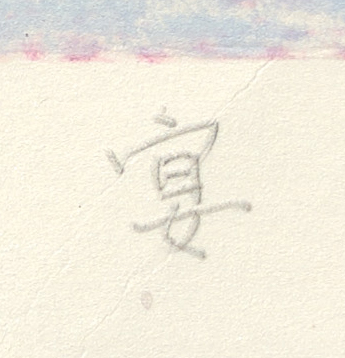
The title of this print is Utage, which means “banquet” or “party.” Abstract art uses color, shape, form, and line to create compositions that are not representative of visual reality. Sometimes, but not always, the title of an abstract work can hint at what the artist intended. Think about why Shinagawa chose this title and how it changes your ideas about the different elements of this composition. For some viewers, the pieces of wood might resemble the placement of speakers at a table, or the movement of conversation between them.
